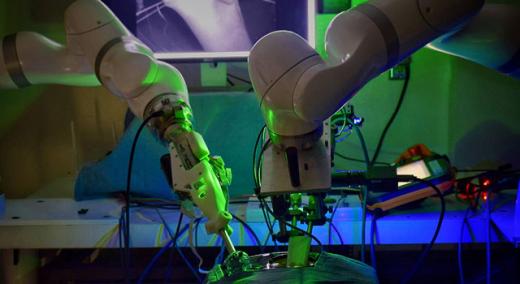Courtesy of Axel Krieger and Jin Yang
In 2004, the United States’ Defense Advanced Research Projects Agency (DARPA) dangled a $1 million prize for any group that could design an autonomous car that could drive itself through 142 miles of rough terrain from Barstow, California, to Primm, Nevada. Thirteen years later, the U.S. Department of Defense announced another award—not for a robot car this time, but for autonomous robotic doctors.
|
ADVERTISEMENT |
Robots have been found in the operating suite since the 1980s for things like holding a patient’s limbs in place, and later for laparoscopic surgery, during which surgeons can use remote-controlled robot arms to operate on the human body through tiny holes instead of huge cuts. But for the most part, these robots have been, in essence, just very fancy versions of the scalpels and forceps surgeons have used for centuries—incredibly sophisticated, granted, and capable of operating with incredible precision, but still tools in the surgeon’s hands.
…

Add new comment